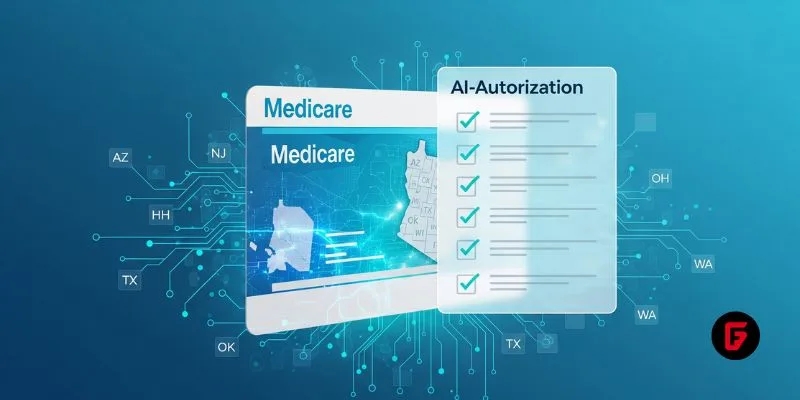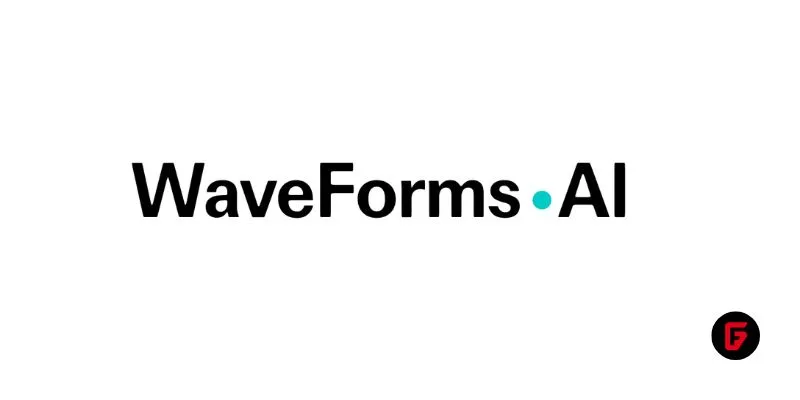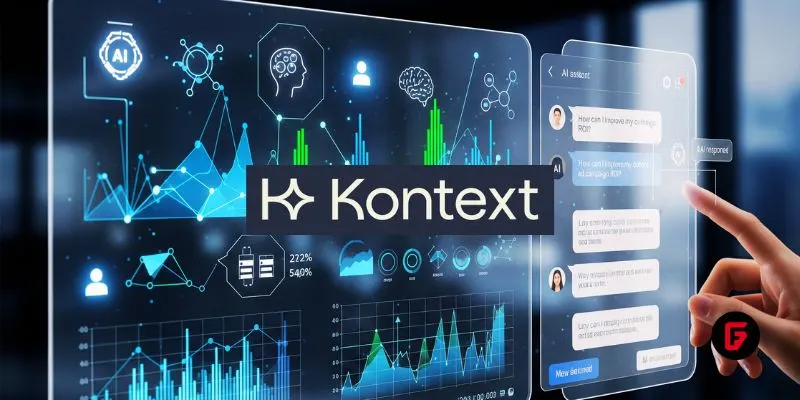
By futureTEKnow | Editorial Team
TL;DR: Artificial Intelligence is revolutionizing the business landscape by offering numerous AI business benefits, including AI productivity optimization and AI cost reduction. By leveraging AI workflow automation and AI decision-making improvement, businesses can significantly enhance their operations and stay competitive in the digital age.
10 Benefits of Artificial Intelligence in Business
Imagine a world where your business runs like a well-oiled machine, anticipating customer needs, streamlining operations, and making data-driven decisions with pinpoint accuracy. Sound too good to be true? Welcome to the era of Artificial Intelligence in business.
AI isn’t just a buzzword anymore – it’s a game-changer that’s reshaping industries faster than you can say “machine learning.” But here’s the million-dollar question: How does AI impact your business, and are you ready to harness its power?
Let’s face it, in today’s cutthroat market, staying ahead of the curve isn’t just an option – it’s a necessity. Whether you’re a startup founder burning the midnight oil or a seasoned CEO looking to future-proof your empire, AI offers a treasure trove of benefits that could skyrocket your success.
From boosting productivity to slashing costs, AI is the secret weapon that savvy businesses are using to leave their competitors in the dust. But hold on to your hats, because we’re just scratching the surface.
Ever wondered how AI could transform your customer experience from “meh” to “mind-blowing”? Or how it could turn your decision-making process from a guessing game into a strategic masterpiece? Well, you’re in for a treat.
In this post, we’re diving deep into the top 10 AI business benefits that are setting the business world on fire. We’ll explore how AI productivity optimization is redefining efficiency, why AI workflow automation is the key to unlocking your team’s potential, and how AI cost reduction strategies could be your ticket to a healthier bottom line.
Effective monitoring is the backbone of any successful business, enabling organizations to maintain control and optimize their operations. Artificial intelligence has significantly enhanced this capability, leading to substantial AI business benefits. By integrating AI-powered monitoring systems, companies can achieve unparalleled levels of oversight and control.
These intelligent systems excel at processing vast amounts of data in real-time, allowing for quick identification of anomalies or potential issues. This capability not only enhances operational efficiency but also contributes to AI cost reduction by minimizing downtime and preventing costly errors.
AI-driven monitoring tools provide valuable insights that support AI decision-making improvement. By analyzing patterns and trends, these systems can offer predictive analytics, enabling managers to make informed choices proactively rather than reactively.
The implementation of AI in monitoring processes also plays a crucial role in AI productivity optimization. By automating routine monitoring tasks, employees can focus on more strategic activities, boosting overall productivity and job satisfaction.
Furthermore, AI-powered monitoring systems facilitate AI workflow automation, streamlining operations and reducing the need for manual intervention. This not only improves efficiency but also minimizes the risk of human error, ensuring more consistent and reliable monitoring across all business processes.
As businesses continue to evolve in the digital age, the role of AI in monitoring will only grow more significant, offering a competitive edge to those who embrace this transformative technology.
Example:
A prime example of this is Eagle Eye Networks, a company that provides AI-powered video analytics for enhanced surveillance capabilities. Their solutions ensure reliable real-time monitoring even with limited bandwidth, making them ideal for industries like retail, education, and banking1. By leveraging AI-driven monitoring tools, Eagle Eye Networks helps businesses achieve AI cost reduction by minimizing downtime and preventing costly errors.
One of the most transformative applications of artificial intelligence in business is predictive analytics. By leveraging vast amounts of historical and real-time data, AI enables companies to forecast trends, anticipate customer behaviors, and make proactive decisions. This directly ties into AI decision-making improvement, as businesses can rely on data-driven insights rather than intuition or guesswork.
Predictive analytics contributes to AI cost reduction by identifying inefficiencies, preventing potential risks, and optimizing resource allocation. For example, in supply chain management, AI can predict demand fluctuations, ensuring inventory levels are neither excessive nor insufficient.
When integrated into operations, predictive analytics also supports AI productivity optimization by streamlining processes and enabling teams to focus on high-value tasks. Combined with AI workflow automation, businesses can achieve a seamless flow of operations while staying ahead in competitive markets.
Ultimately, predictive analytics powered by AI isn’t just about looking forward; it’s about making smarter, faster decisions today that drive long-term success.
Example:
Amazon employs machine learning algorithms and advanced data analytics to accurately predict customer preferences and buying patterns. This enables the company to offer personalized product recommendations, which not only improves customer satisfaction but also drives sales. The predictive capabilities allow Amazon to achieve AI productivity optimization by streamlining its vast inventory management and logistics operations
During the COVID-19 pandemic, Amazon demonstrated its AI workflow automation prowess by quickly adapting its supply chain to meet the surge in online shopping demand. The company’s predictive models helped forecast shifts in consumer behavior, allowing it to adjust inventory levels and introduce new services like same-day grocery delivery.
By harnessing the power of predictive analytics, Amazon has realized significant AI cost reduction benefits. The company’s ability to anticipate demand fluctuations helps optimize inventory levels, reducing waste and improving resource allocation.
Artificial intelligence offers a powerful tool for AI productivity optimization and error reduction by leveraging machine learning algorithms to significantly decrease human-induced mistakes, especially in repetitive tasks prone to oversight. One of the key AI business benefits is its ability to process vast amounts of data with unparalleled accuracy. Unlike humans, AI systems don’t suffer from fatigue or distractions, maintaining consistent performance levels around the clock. This reliability translates into fewer errors in data entry, financial calculations, and quality control processes.
AI’s role in AI workflow automation further contributes to error minimization. By automating routine tasks, businesses not only speed up processes but also eliminate the risk of human error in these operations. This is particularly valuable in industries where precision is paramount, such as healthcare, finance, and manufacturing.
The implementation of AI in AI decision-making improvement also plays a crucial role in reducing errors. By analyzing historical data and identifying patterns, AI can provide insights that help managers make more informed decisions, reducing the likelihood of costly mistakes.
While the initial investment in AI technology might seem substantial, the long-term AI cost reduction achieved through error minimization is significant. Fewer mistakes mean less time and resources spent on corrections, improved customer satisfaction, and a reduced risk of reputational damage.
As businesses continue to navigate complex challenges, the error-minimizing capabilities of AI stand out as a game-changer, offering a path to enhanced accuracy, efficiency, and overall operational excellence.
Example:
A prime example of this is BMW, which uses AI in its manufacturing plants to ensure that the correct model designation is attached to each vehicle. By analyzing hundreds of images, the AI system can recognize permitted combinations and detect any discrepancies, thereby preventing errors that could lead to costly rework or recalls
Artificial Intelligence (AI) has become a cornerstone for businesses seeking to enhance their operational efficiency. By leveraging AI, companies can unlock a range of AI business benefits that directly impact their ability to streamline processes and maximize output.
One of the most significant advantages of AI is AI cost reduction. By automating repetitive tasks and optimizing resource allocation, AI helps businesses cut unnecessary expenses and redirect funds to more critical areas. This not only improves the bottom line but also allows companies to invest in growth and innovation.
AI excels at AI decision-making improvement. By analyzing vast amounts of data and identifying patterns that humans might overlook, AI-powered systems can provide insights that lead to more informed and timely decisions. This capability is particularly valuable in industries where split-second choices can have far-reaching consequences.
AI productivity optimization is another key factor in boosting efficiency. AI tools can monitor workflows, identify bottlenecks, and suggest improvements in real-time. This continuous optimization ensures that teams are always operating at peak performance, regardless of changing conditions or unexpected challenges.
Perhaps one of the most transformative aspects of AI in business is AI workflow automation. By taking over routine, time-consuming tasks, AI frees up human workers to focus on higher-value activities that require creativity, emotional intelligence, and strategic thinking. This not only increases overall productivity but also leads to higher job satisfaction and employee engagement.
As businesses continue to adapt to an increasingly digital landscape, the efficiency gains offered by AI will likely become not just an advantage, but a necessity for staying competitive. However, it’s crucial to approach AI implementation thoughtfully, ensuring that it complements human skills rather than replacing them entirely.
Example:
To illustrate the impact of AI on business efficiency, let’s consider the case of JPMorgan Chase. The financial giant has leveraged AI to dramatically improve its document review process. By implementing an AI-powered system, JPMorgan Chase reduced the time required for reviewing commercial loan agreements from 360,000 hours to mere seconds.
This remarkable transformation not only saved countless work hours but also significantly enhanced the accuracy and speed of their loan servicing operations. The AI system’s ability to process and analyze vast amounts of complex financial data demonstrates how artificial intelligence can revolutionize traditional business processes, leading to substantial gains in operational efficiency and cost reduction.
Fraud poses a significant threat to businesses, with increasingly sophisticated attempts to bypass traditional security measures. Artificial intelligence has emerged as a powerful tool in combating financial misconduct, offering robust solutions that go beyond conventional rule-based systems.
By leveraging machine learning algorithms, AI can analyze vast amounts of data in real-time, identifying subtle patterns and anomalies that human analysts might miss. This capability significantly enhances AI decision-making improvement in fraud detection processes, allowing companies to stay one step ahead of potential threats.
The implementation of AI-driven fraud detection systems contributes to overall AI cost reduction by minimizing false positives and reducing the need for manual reviews. This not only saves time and resources but also improves customer experience by reducing friction in legitimate transactions.
AI’s ability to adapt and learn from new fraud patterns ensures that businesses maintain a proactive stance against evolving threats. This continuous learning process is a prime example of AI productivity optimization, as it allows security teams to focus on high-priority cases while the AI handles routine checks.
The integration of AI in fraud detection also facilitates AI workflow automation, streamlining the entire process from initial alert to investigation and resolution. This automation not only speeds up response times but also ensures consistency in fraud management procedures across the organization.
Example:
Mastercard’s Decision Intelligence technology is a notable example of AI in fraud detection. It uses historical shopping and spending habits of cardholders to set a behavioral baseline against which it compares new transactions. This approach significantly reduces false declines by evaluating each transaction in context, rather than relying on a one-size-fits-all method. This technology not only enhances fraud detection but also improves customer satisfaction by minimizing unnecessary transaction rejections.
Making informed decisions quickly is crucial for businesses to stay competitive. This is where AI decision-making improvement offers a significant advantage. By analyzing vast amounts of data and using complex algorithms, AI systems provide insights and predictions that humans can’t match, leading to smarter choices across various operational areas.
One of the key AI business benefits is reducing human bias in decision-making. While human judgment is invaluable, it can sometimes be influenced by personal experiences or preconceptions. AI, on the other hand, relies solely on data and predefined parameters, ensuring a more objective approach to problem-solving.
AI productivity optimization extends to the decision-making process itself. By automating routine decisions and providing data-driven recommendations for more complex issues, AI frees up valuable time for managers and executives to focus on strategic thinking and creative problem-solving.
It’s worth noting that the implementation of AI in decision-making processes often goes hand in hand with AI workflow automation. This synergy not only streamlines operations but also ensures that decisions are made and acted upon more efficiently, creating a virtuous cycle of improvement throughout the organization.
Example:
Let’s consider Amazon as a prime example of how AI decision-making improvement enhances business operations. Amazon uses AI extensively to optimize various processes, including supply chain management and product recommendations. Here’s how Amazon leverages AI to make better decisions:
Supply Chain Efficiency: Amazon employs AI to forecast demand, optimize inventory levels, and improve routing orders. This predictive capability allows Amazon to make informed decisions about stock management and logistics, ensuring that products are delivered efficiently and on time.
Product Recommendations: Amazon uses AI to analyze images and videos, enhancing product listings and recommendations. This not only improves customer experience but also helps Amazon make data-driven decisions about which products to promote and when.
AI Workflow Automation: By automating routine tasks, such as inventory management and order processing, Amazon can focus on strategic decisions that drive business growth. This automation also contributes to AI productivity optimization, freeing up resources for more complex and creative tasks.
AI Cost Reduction: Through better supply chain management and reduced waste, Amazon achieves significant AI cost reduction. By minimizing errors and optimizing resources, Amazon ensures a healthier bottom line.
Overall, Amazon’s use of AI demonstrates how AI business benefits can transform decision-making processes, leading to improved efficiency, customer satisfaction, and profitability.
In today’s competitive business landscape, companies are constantly seeking ways to optimize their operations and reduce overhead. AI cost reduction has emerged as a powerful tool in this pursuit, offering innovative solutions that can significantly impact a company’s bottom line.
One of the primary AI business benefits is its ability to automate repetitive tasks and streamline workflows. By implementing AI workflow automation, organizations can reallocate human resources to more strategic, high-value activities. This shift not only reduces labor costs but also minimizes errors associated with manual processes, leading to substantial savings over time.
AI’s data analysis capabilities contribute to AI decision-making improvement, allowing businesses to make more informed choices about resource allocation and investment strategies. By leveraging predictive analytics, companies can anticipate market trends, optimize inventory management, and reduce waste – all of which translate to cost savings.
AI productivity optimization is another key factor in reducing expenses. AI-powered tools can analyze work patterns, identify bottlenecks, and suggest process improvements that boost overall efficiency. This enhanced productivity often results in faster project completion times and reduced operational costs.
It’s important to note that while AI offers significant potential for cost reduction, successful implementation requires careful planning and integration with existing systems. Companies should approach AI adoption strategically, focusing on areas where it can provide the most substantial impact on their specific business model and operational challenges.
Example:
Pfizer, the world’s largest pharmaceutical company, exemplifies how AI cost reduction can significantly impact business operations. By leveraging AI and supercomputing, Pfizer has accelerated the development of critical drugs, such as the COVID-19 treatment Paxlovid. This not only reduced the time-to-market but also lowered costs associated with prolonged development cycles. Additionally, AI has improved clinical trials, drug discovery, and patient stratification, contributing to increased revenue and competitive advantage.
This strategic use of AI aligns with broader AI business benefits, including AI decision-making improvement and AI productivity optimization. By automating certain processes and enhancing decision-making, Pfizer has streamlined its workflows, allowing for more efficient allocation of resources and a focus on high-value activities. This approach demonstrates how AI workflow automation can lead to substantial cost savings while enhancing operational efficiency.
One of the most transformative applications of artificial intelligence in business is its ability to streamline and automate workflows. By leveraging AI workflow automation, companies can eliminate repetitive tasks, reduce manual errors, and free up valuable time for employees to focus on higher-value activities. This not only enhances operational efficiency but also contributes to significant AI cost reduction by minimizing resource wastage and improving task accuracy.
Additionally, automating workflows with AI fosters AI productivity optimization, ensuring that processes run smoothly and consistently without bottlenecks. For example, AI-powered tools can handle everything from data entry and invoice processing to customer support ticket routing, enabling businesses to operate at peak efficiency.
Beyond just saving time, AI decision-making improvement plays a critical role in optimizing workflows. By analyzing data in real time, AI systems can identify inefficiencies, predict potential issues, and recommend actionable solutions to refine processes further. These insights allow businesses to make smarter, faster decisions that align with their goals.
Incorporating AI into workflow automation is more than just a technological upgrade—it’s a strategic move that delivers measurable AI business benefits across industries. Whether you’re managing supply chains, marketing campaigns, or internal operations, AI is redefining how work gets done.
Example:
To illustrate the power of AI workflow automation, let’s consider the case of TechInnovate, a mid-sized software development company based in Austin, Texas. TechInnovate implemented an AI-driven workflow automation system to streamline their project management processes and enhance team productivity.
By implementing these AI business benefits, TechInnovate has seen a 30% increase in project completion rates and a 25% reduction in time spent on administrative tasks. The company’s CTO, Sarah Chen, notes, “Our AI-powered workflow automation has transformed how we manage projects. It’s not just about saving time; it’s about making smarter decisions and allowing our team to focus on what they do best – innovating.”
TechInnovate’s success story demonstrates how AI workflow automation can be a game-changer for businesses, offering tangible improvements in efficiency, decision-making, and overall productivity
Artificial intelligence is revolutionizing the way businesses operate, offering transformative solutions that drive efficiency and streamline operations. One of the most significant AI business benefits is its ability to enhance productivity across various domains. By integrating AI workflow automation, companies can eliminate repetitive, time-consuming tasks, allowing employees to focus on more strategic and creative initiatives.
AI systems are designed to analyze vast amounts of data at lightning speed, enabling faster and more accurate decision-making processes. This AI decision-making improvement not only saves time but also ensures that businesses are making informed choices backed by data-driven insights. The result? A more agile and responsive organization.
Another critical advantage lies in AI productivity optimization. From predictive maintenance in manufacturing to personalized customer interactions in retail, AI helps businesses achieve more with fewer resources. This naturally ties into AI cost reduction, as increased efficiency often leads to significant savings in operational expenses.
In today’s fast-paced environment, leveraging AI to boost productivity isn’t just a competitive edge—it’s becoming a necessity for businesses aiming to thrive in the digital age.
Example:
A notable example of AI productivity optimization is seen in the operations of UPS, the logistics giant. UPS uses AI to optimize delivery routes, reducing fuel consumption and lowering emissions. By leveraging data on traffic patterns, road conditions, and weather, UPS’s AI system, known as ORION (On-Road Integrated Optimization and Navigation), can dynamically adjust routes in real-time. This not only enhances delivery efficiency but also contributes to AI cost reduction by minimizing fuel costs and vehicle wear. Additionally, the use of AI in route optimization exemplifies AI decision-making improvement, as it ensures that decisions are based on the most current and accurate data available.
This integration of AI into UPS’s operations showcases how AI workflow automation can significantly boost productivity by automating complex logistical tasks, allowing human resources to focus on higher-value activities.
If you want to be part of today’s hyper-competitive business landscape, delivering exceptional customer experiences is no longer a luxury—it’s a necessity. This is where artificial intelligence (AI) steps in as a game-changer, offering a plethora of AI business benefits that directly impact customer satisfaction and loyalty.
By leveraging AI-powered chatbots and virtual assistants, companies can provide 24/7 support, instantly addressing customer queries and concerns. These AI-driven solutions not only ensure round-the-clock availability but also contribute significantly to AI cost reduction by minimizing the need for large customer service teams.
Moreover, AI’s ability to analyze vast amounts of customer data in real-time leads to AI decision-making improvement. This enables businesses to personalize interactions, predict customer needs, and offer tailored recommendations, creating a more engaging and satisfying experience for consumers.
The implementation of AI in customer relationship management (CRM) systems results in AI productivity optimization, allowing sales and support teams to focus on high-value tasks while automating routine processes. This shift not only improves efficiency but also enhances the quality of customer interactions.
Perhaps one of the most transformative AI business benefits is AI workflow automation. By streamlining various customer-facing processes—from initial contact to post-purchase follow-ups—businesses can create seamless, frictionless experiences that delight customers and foster long-term loyalty.
As AI technology continues to evolve, its impact on customer experience will only grow, making it an indispensable tool for businesses aiming to thrive in an increasingly digital world.
Example:
One notable example of AI’s impact on customer experience comes from Virgin Atlantic. The airline adopted Microsoft 365 Copilot and GitHub Copilot, leading to significant productivity improvements and enhanced customer interactions. By leveraging AI-powered tools, Virgin Atlantic has streamlined its operations, allowing staff to focus more on personalized customer service rather than routine tasks
The implementation of AI has enabled Virgin Atlantic to:
Reduce response times to customer inquiries
Provide more accurate and consistent information across various touchpoints
Analyze customer feedback and preferences more effectively
This AI-driven approach has not only improved customer satisfaction but also contributed to AI cost reduction by optimizing resource allocation. Furthermore, the airline has experienced AI productivity optimization as employees can now handle more complex customer needs efficiently, demonstrating the tangible AI business benefits in the highly competitive aviation industry.

Traditional Medicare will pilot AI-assisted prior authorization in 2026 across six states, focusing on high-risk outpatient services. Clinicians retain final say, but incentives and access concerns loom as CMS tests fraud reduction and “gold card” exemptions. Here’s what providers and patients should know.

OpenArt’s new “one-click story” compresses scripting, visuals, and edits into ready-to-post short videos—fueling viral growth and a fresh IP debate. We break down how it works, adoption signals, what’s next (multi-character, mobile), and practical guardrails creators and brands should follow to stay original and compliant.

OpenAI’s o3 swept the Kaggle AI chess tournament, defeating xAI’s Grok 4–0. The victory fueled the intense rivalry between Altman and Musk, reshaping AI benchmarks.

Pinterest’s CEO confirms that fully agentic AI shopping is years away, as the platform invests in AI-powered tools to enhance discovery, inspiration, and personalized shopping experiences for millions.

Shopify’s new AI shopping tools are transforming e-commerce, letting agents and chatbots deliver smooth, personalized shopping and checkout experiences across platforms. Learn how these innovations reshape online retail.

Meta has acquired WaveForms AI, a startup pioneering emotion-detecting voice technology. Learn what this means for Meta’s AI voice ambitions and the future of AI audio.

Tracelight is revolutionizing financial modelling for finance professionals with AI-powered Excel tools that automate complex tasks, reduce errors, and unlock new analysis capabilities. Learn how this next-gen solution changes the future of spreadsheets.

Microsoft rolls out GPT-5 across its Copilot suite, integrating smarter AI for enterprise and personal users. Discover new features, free access, and what sets this launch apart.

OpenAI’s GPT-5 is now live for all ChatGPT users. It brings faster, smarter AI with improved reasoning, expanded context, and safer outputs—marking a major leap in generative technology.

Chai Discovery’s $70M funding ushers in a new era for AI-powered antibody design, promising faster, more successful drug discoveries with its breakthrough Chai-2 model.

Discover how Google’s Gemini generative AI is revolutionizing Android—making your phone smarter, faster, and truly personal with next-gen features and privacy-first innovation.

Kontext lands $10M seed round to fuel its generative AI advertising platform, enabling brands to deliver personalized, context-rich real-time ads in AI applications and chatbots.
To provide the best experiences, we use technologies like cookies to store and/or access device information. Consenting to these technologies will allow us to process data such as browsing behavior or unique IDs on this site. Thanks for visiting futureTEKnow.